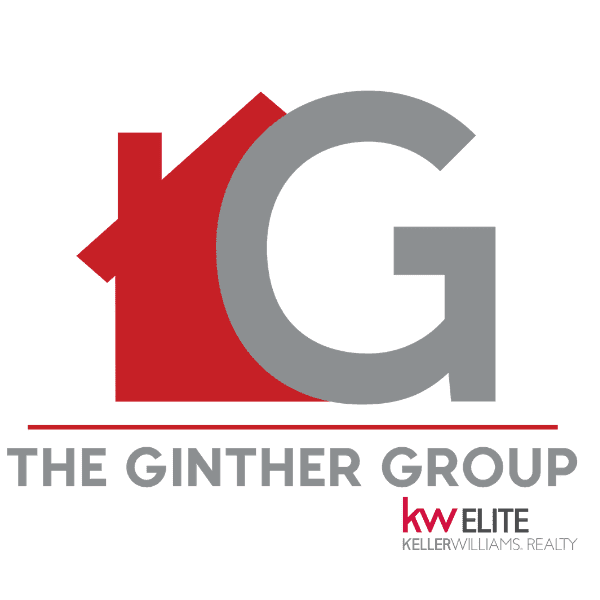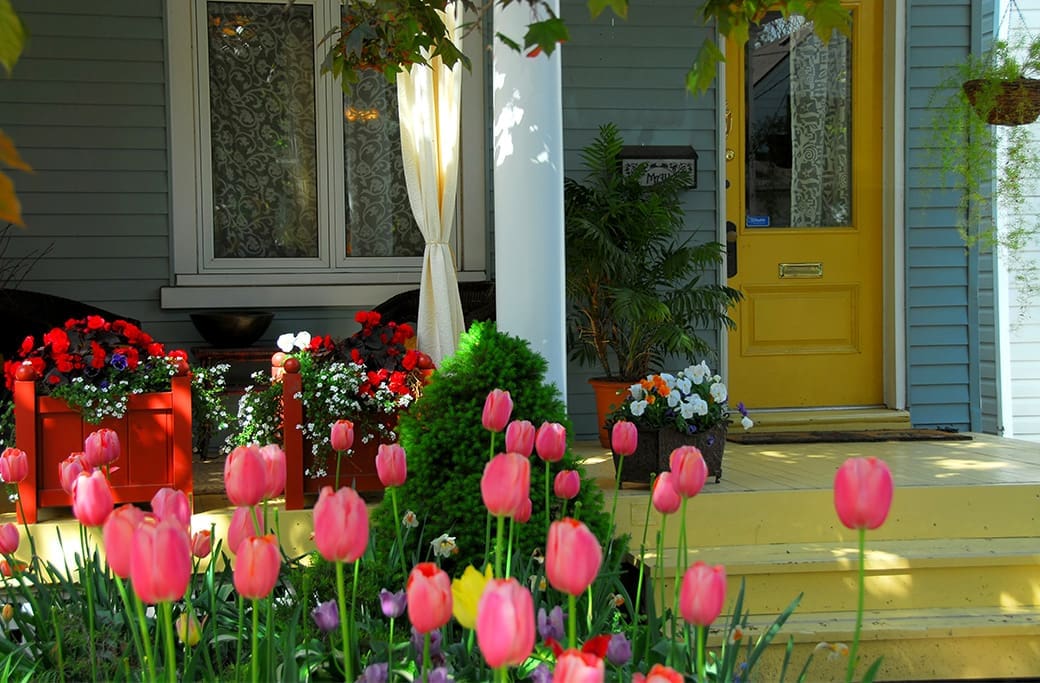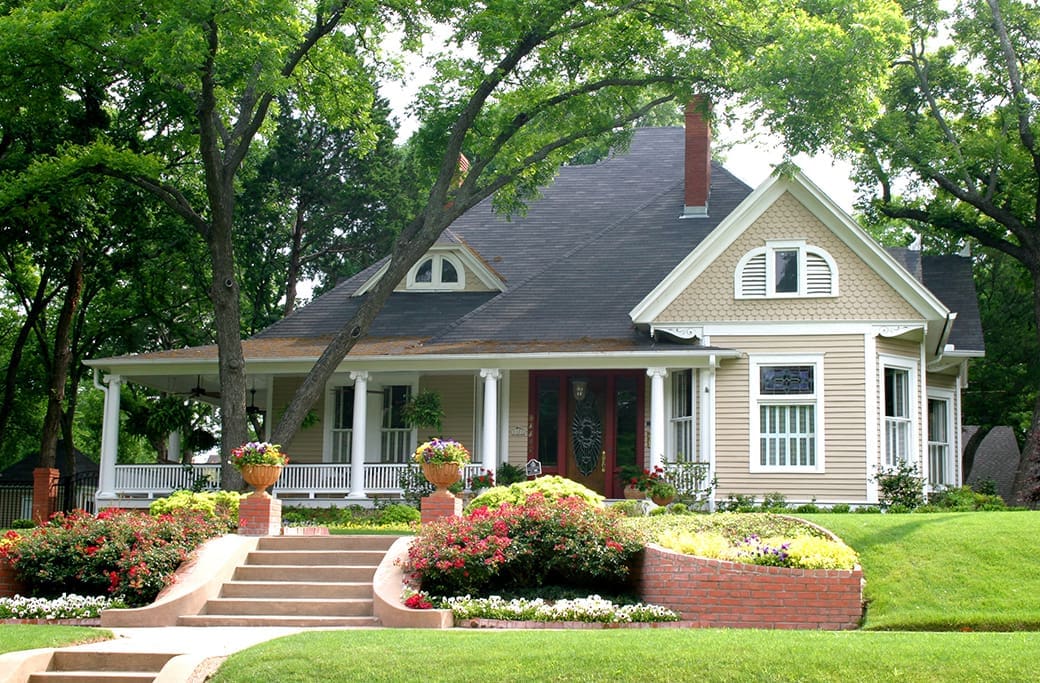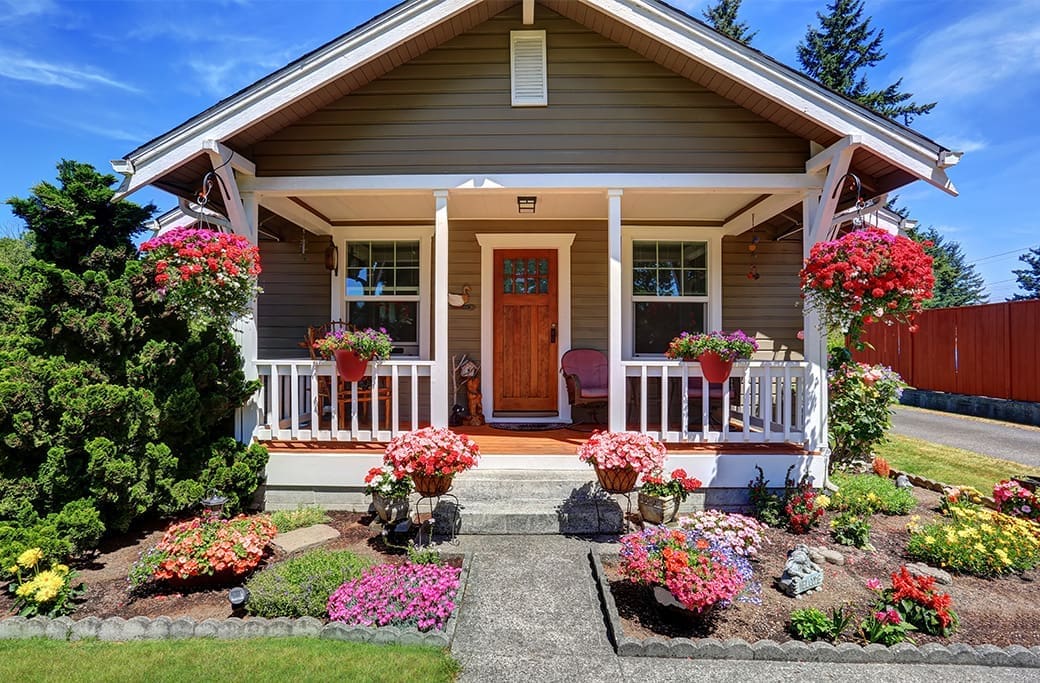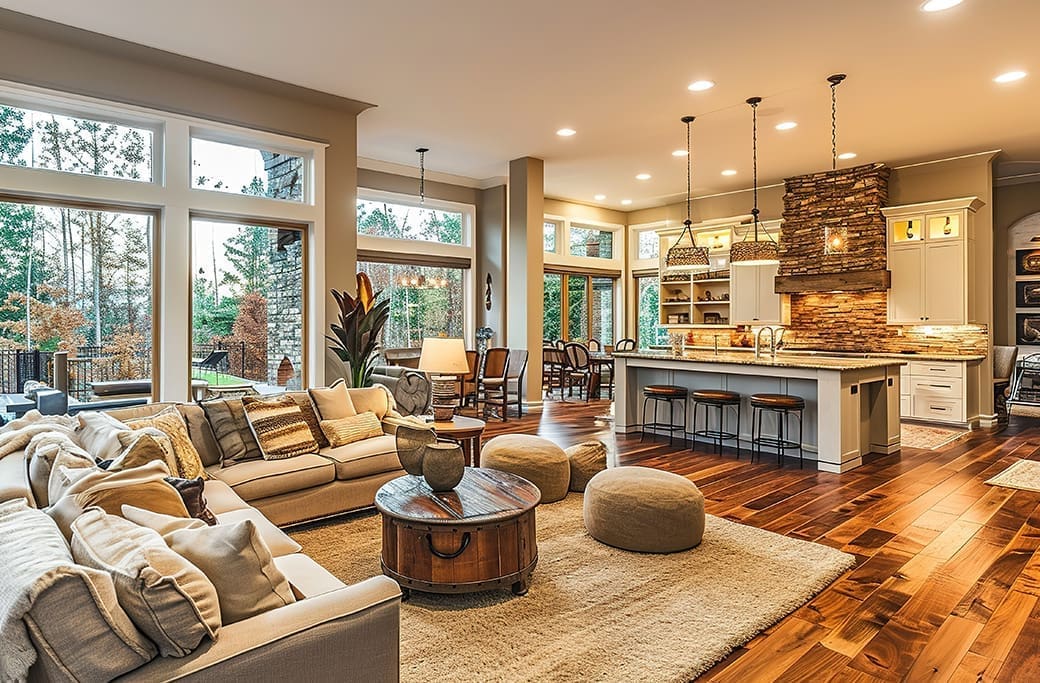
The art of interior design is often seen as a personal expression of taste and style, a way to create a harmonious environment that reflects the essence of a living space. Yet, what many homeowners and investors may not realize is that these design choices hold significant weight beyond aesthetics. Strikingly, the colors on your walls, the materials beneath your feet, and the layout of your rooms can play a pivotal role in determining the market value of your property. Trends in interior design not only shape our homes but are also influencing the property market. Whether you’re a homeowner aiming to refresh your living space or a real estate professional striving to boost asset value, The Ginther Group is ready to assist. Understanding these trends is vital for making informed, valuable, and forward-thinking design choices.
The Psychology of Color Schemes
Color is undeniably one of the most powerful tools within an interior designer’s repertoire. It goes beyond merely injecting vibrancy or tranquility into a space; color has the remarkable ability to subtly influence the emotions and actions of individuals within that environment. When considering the impact on property value, these psychological effects can be strategically utilized to craft spaces that not only appeal to prospective buyers but also foster heightened efficiency and output within business settings. By understanding the intricate interplay between color and human psychology, designers can create truly impactful and purposeful interior spaces that resonate with their occupants on a deeper level.
Neutral and Earthy Tones: When it comes to interior design, incorporating earthy tones such as terracotta and sage, along with classic neutrals like white and beige, can create a tranquil ambiance. These colors not only provide a soothing backdrop but also serve as a versatile canvas for individuals to express their unique style, ensuring a seamless transition into a new space without feeling the need for a major design overhaul.
Vibrant Accents: Incorporating a strategic selection of bold colors into your decor can elevate your space. Whether it’s a stunning feature wall or eye-catching accent furniture pieces, these pops of vibrancy inject character without overpowering the room. By creating focal points that draw the eye and inspire, you can effectively showcase architectural elements and design objects, enhancing the overall aesthetic appeal of your space.
Diving into Monochromatic Themes:
Playing with shades in a single color palette can create a stylish and balanced look effortlessly. This design approach, when done well, can give off a luxurious and detailed vibe, especially with textures in similar tones. Mixing different hues in the same color group can lift the room’s vibe, adding richness and elegance.
Open Floor Plans vs. Traditional Layouts
The ongoing debate between open floor plans and traditional compartmentalized layouts remains a dynamic conversation influenced by evolving societal preferences. While open floor plans promote a sense of spaciousness and interconnectedness, traditional layouts offer privacy and distinct room functions. Selecting the appropriate design can profoundly affect the functionality, aesthetics, and overall value of a property.
Exploring the Social Dynamics of Open Plans:The Need for Defined Spaces: On the other hand, traditional layouts with distinct rooms cater to a need for privacy and delineated functions. While not as popular as open plans, certain demographics, such as those needing a home office or personalized spaces, may find these layouts more practical and thus, valuable. Embracing open floor plans presents a unique sociable environment that resonates with contemporary living. By encouraging interaction, fostering a feeling of spaciousness, and promoting versatile space utilization, these layouts cater to diverse needs. This design preference is especially favored by younger age groups and families, enhancing the appeal and desirability of a property.
Adaptable Designs: The trend towards adaptable designs is on the rise, with a growing emphasis on achieving a delicate balance between functionality and aesthetic appeal. Incorporating features like movable partitions and convertible furniture provides flexibility, allowing spaces to seamlessly transition between open and closed configurations based on the specific requirements at any given time. This versatile approach not only meets a broader spectrum of preferences but also significantly boosts the overall market appeal of a property.
Influence on Property Values
The importance of interior design on property values cannot be overstated. Homes and commercial properties that are thoughtfully designed in line with current trends can command higher prices and attract a larger pool of interested buyers or tenants.
Perceived Value and Marketability: When a space is thoughtfully designed, it not only cultivates a positive initial impression but also instills a sense of perceived worth in prospective buyers. This can play a crucial role in distinguishing a property within a competitive market landscape, enhancing its memorability and overall market appeal. By paying attention to the nuances of design, a property can stand out as a unique and desirable option for potential buyers.
Return on Investment (ROI): Strategic design choices often translate to a higher ROI. Investing in the interior of a property, whether through a comprehensive overhaul or minor updates, can yield significant returns. This can result in a considerable increase in a home’s selling price, making it a worthwhile endeavor for homeowners looking to maximize their property’s value.
Tips for Homeowners and Real Estate Investors
For those looking to capitalize on the influence of interior design on property values, there are several actionable steps to consider. These recommendations can help guide homeowners and real estate investors toward value-boosting design decisions.
Budget-Friendly Updates: When it comes to refreshing your space, you don’t always need a hefty budget. Simple yet strategic changes like applying a fresh coat of paint, reorganizing to improve flow, or replacing outdated fixtures can bring about a noticeable transformation without straining your finances. These small adjustments can go a long way in enhancing the look and feel of your space.
Staging for Selling Properties: Home staging, a strategic approach to presenting a property in its best light, has proven to be a highly effective method for accelerating sales and securing higher prices in the real estate market. By meticulously arranging furniture, decor, and other elements, this temporary design process creates an inviting atmosphere that resonates with potential buyers. The goal is to help them visualize themselves living in the space, fostering an emotional connection and increasing the perceived value of the property.
Collaboration with Professionals: Engaging with skilled interior designers or experienced real estate professionals can bring a wealth of expertise to the table. By tapping into their knowledge, homeowners can ensure that their design decisions align seamlessly with the ever-evolving market demands. Moreover, these professionals can offer insightful cost estimations and trend projections, granting homeowners access to valuable foresight that may otherwise be inaccessible.
Interior Color and Layout Design Trends: How Home Decor Influences Property Values
The ability of interior design to impact property values is a powerful consideration for homeowners and investors, a concept deeply understood by The Ginther Group. Choices in color, material, layout, and technology can significantly influence how a property is perceived in the market, shaping its value for potential occupants. To navigate the evolving design landscape successfully, staying informed and adaptable is crucial. Acknowledging the psychological impact of color, the value of sustainability, the utility of smart technology, and the flexibility of space are key strategies recommended by The Ginther Group. By aligning with these principles, homeowners and investors can create properties that are not only trendy but also inherently valuable.
Those interested should heed this advice as a call to action. By carefully considering interior design, stakeholders can unlock the potential for increased property values, enhanced investment returns, and most importantly, delighted occupants who experience both comfort and inspiration in their living spaces. The Ginther Group encourages you to embrace these insights and witness how design trends elevate spaces and set new benchmarks for property values.
